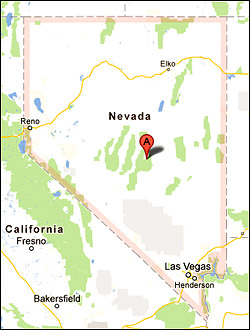While the NY-26 special election has taken an interesting turn since Democrats might be on the doorstep of positioning themselves for an upset win on May 24, the NV-2 vacancy seems to be flowing in the opposite direction.
Last week, despite the contention from Nevada Republican Party officials that the state parties would choose nominees for the Sept. 13 special election to fill the unexpired portion of now-Sen. Dean Heller’s (R) current term in the House, Democratic Secretary of State Ross Miller ruled that a jungle-ballot format would take precedence. This means anyone can run for the seat regardless of political party affiliation and, like in the Hawaii special election of 2010, the person obtaining the most votes in the one election, regardless of percentage, is elected. Such a format favors the candidate with the strongest base and plays against a particular party that may field two or more viable candidates.
Miller’s ruling was savvy on at least two points. First, he, as a potential aspirant for future higher office himself, scores points with the Democratic establishment because this is the best possible format for his party to steal what should be a reliable Republican seat. Second, even if the Republicans were to file suit against him, a court would be in a difficult position to rule against a Secretary of State who merely opened up the process equally to everyone, thus his decision is also legally secure.
It was originally believed that the Democrats had a legitimate shot in the jungle format because controversial 2010 GOP Senatorial nominee Sharron Angle would be in the field of candidates, since she had already announced for the seat in the regular election. Before Sen. John Ensign (R) resigned and Rep. Heller was appointed to replace him, the congressman had made known his intention to run for the Senate in the regular 2012 election. Angle barely lost the 2006 congressional nomination to Heller (by 421 votes) the last time the seat was open.
It was also conventional wisdom that Lt. Gov. Brian Krolicki (R) would hop into the congressional race. His strong presence would split the GOP vote and allow a consensus Democrat, presumably state Treasurer Kate Marshall, to slip by the split Republicans and win the seat with a plurality of the vote.
It appears now, however, that the tables have turned. While Angle did enter the special election contest, Krolicki backed away. State Republican Party chairman Mark Amodei, a former state legislator who briefly ran for the Senate in 2010 only to withdraw because he lacked funding, is now in the congressional race. But, so far, the only two other Republicans to declare candidacy are state Sen. Greg Brower and former US Navy officer Kirk Lippold, both of whom have small constituencies.
Amodei, coming from the more moderate wing of the party, could become the main alternative to Angle but none of the Republicans have as strong a political base, both financially and vote-based, as the former Senatorial nominee. Aside from barely losing the GOP primary to Heller in 2006, Ms. Angle actually carried the 2nd district, even against Senate Majority Leader Harry Reid, in the 2010 general election. So, it is clear that this north/central Nevada region constitutes her main base of support.
Now, the Democrats have a potentially split field. While Treasurer Marshall, who most believe is the party’s strongest candidate, announced her candidacy, so did Jill Derby, the former state Democratic Party chair, university regent, and congressional nominee in both 2006 and ’08. Derby, too, has a base in the district. She held Heller to a respectable 45-50 percent winning percentage in ’06, but fell to 41-52 percent in the re-match. It is conceivable that she will take a significant percentage in the special election, votes that will more than likely come right from Marshall’s political hide. Additionally, former university regent and 2010 Democratic congressional nominee Nancy Price is also running again. Though she lost to Heller in a landslide 33-63% vote, she has the potential of snatching a few more votes from Marshall.
While two weeks ago it looked liked the Democrats were in an enviable special election position, the most recent events seem to be unfolding in Angle’s favor. Much more will happen before the May 25 filing deadline to better define the special election parameters. We will then see if the Democrats can fully coalesce behind Marshall, thus restoring what originally appeared to be a reasonable chance at victory.
___________________________________________________
For further detailed insights, to sign up for my daily email updates, or to sign up to track specific issues or industries, please contact me at PRIsm@performanceandresults.com.


